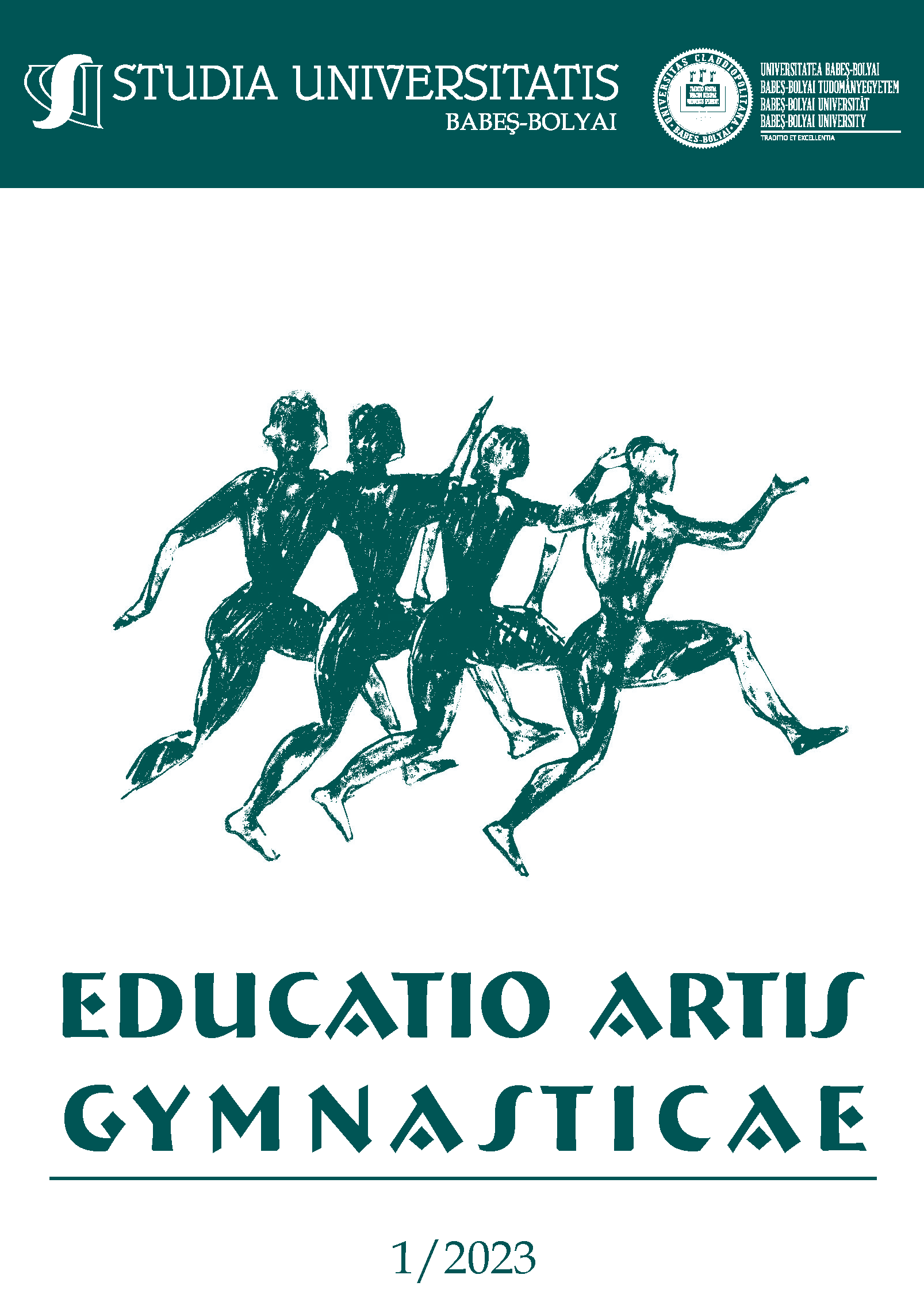A PERSPECTIVE ON COACHING AND ITS INTEGRATION INTO THE ANTHROPOLOGICAL CONTEXT OF SPORT COMPETITION. CASE STUDY: ROMANIAN 3ᴿᴰ LEAGUE, FOOTBALL
DOI:
https://doi.org/10.24193/subbeag.68(1).05Keywords:
coach, third league, football, competition, anthropologyAbstract
The Romanian 3rd Football League is a socio-cultural universe of its own. The large number of participants (teams, players, technical-administrative staff, supporters, etc.), the fact that it takes place in a predominantly rural or small-town setting and its heterogeneous nature give it a specific diversity. Being a coach in this environment is a challenge. Merayo (2021) believes that the coach has to be part of the team, the club and the culture they are part of. However, in Romania’s 3rd league, coaching can be considered a veritable art, with circumstances not found in any other sporting context. Coaches change very often, are caught between the same teams, having to radically change their perspective on a team, a player or a context in an extremely short time. Microsystem, mesosystem, exosystem and macrosystem are part of a model proposed by Bronfenbrenner (1976, 1987), and still considered relevant in the sport context by Merayo (2021). We also identify this in the 3rd league. The third league coach spends his whole life caught between these systemic units. And yet the whole coaching process must be seen as part of a competition with strong anthropological valences. So, is it the specific culture of third league football that is best developed in rural or small-town environments, or does the environment of these towns generate the culture of the third league and is it, in fact, a culture of theirs translated into football?
REZUMAT. Perspectivă asupra coachingului și a integrării sale în contextul antropologic al competiției sportive. Studiu de caz: Liga a 3-a de fotbal din România. Liga a 3-a de fotbal din România este un univers socio-cultural aparte. Numărul mare de participanți (echipe, jucători, personal tehnic-administrativ, suporteri etc), desfășurarea într-un cadru preponderent rural sau al orașelor mici și caracterul lor eterogen aduc acestui mediu o diversitate specifică. A fi cu adevărat coach în acest mediu este o provocare. Merayo (2021) consideră că antrenorul trebuie să se integreze în universul echipei, al clubului și al culturii din care acestea fac parte. Dar, în liga 3-a, din România, coaching-ul poate fi considerat o adevărată artă, cu situații care nu se mai regăsesc în alt context sportiv. Antrenorii se schimbă foarte des, sunt prinși între aceleași echipe, fiind nevoiți să schimbe radical perspectiva în care văd o echipă, un jucător sau un context într-un timp extrem de scurt. Microsistemul, mezosistemul, exosistemul și macrosistemul sunt parte dintr-un model propus de Bronfenbrenner (1976, 1987), și considerat încă de actualitate, în contextul sportiv, de către Merayo (2021). Identificăm acest lucru și în liga a 3-a. Coach-ul de liga a 3-a își desfășoară întreaga viață prins între aceste unități sistemice. Și, totuși, tot procesul de coaching trebuie considerat ca parte unei competiții cu puternice valențe antropologice. Așadar, este cultura specifică fotbalului de liga a 3-a cea care se dezvoltă mai bine în mediul rural sau al orașelor mici sau, mediul acestor orașe generează cultura ligii a 3-a și este, de fapt, o cultura a lor transpusă în fotbal?
Cuvinte cheie: antrenor, liga a 3-a, fotbal, competiție, antropologie
Received 2023 February 5; Revised 2023 April 21; Accepted 2023 April 24; Available online 2023 May 30; Available print 2023 June 30.
References
Bronfenbrenner, U. (1979). The ecology of human development. Cambridge: Harvard University Press.
Bronfenbrenner, U. (1987). La ecologia del desarollo humano. Experimentos en entoronos naturales y disenados. Barcelona: Paidos.
Dietz-Uhler, B., Harrick, E.A., End, C., Jacquemotte, L. (2000). Sex differences in sport fan behaviour and reasons for beings sport fan. Journal of sport behaviour 23, 219-231.
Dragnea, A., et al. (2006). Didactica Educației fizice. Teorie și metodică, Editura FEST, București.
Dragnea, A. (2022). Note de curs, Kinatropologie, UNEFS București.
Fletcher, T. D., and Nusbaum, D. N. (2010). Development of the competitive work environment scale: a multidimensional climate construct. Educ. Psychol. Meas. 70, 105–124. doi: 10.1177/0013164409344492
Gilbert, P., Basran, J. (2019). The Evolution of Prosocial and Antisocial Competitive Behavior and the Emergence of Prosocial and Antisocial Leadership Styles, Front. Psychol., Sec. Organizational Psychology, https://doi.org/10.3389/fpsyg.2019.00610
Linton, R. (1936). The study of Man. An introduction. New York: Appleton-Century-Crofts Inc.
Mahony, D.F., Nakazawa, M., Funk D.C., James J.D., Gladden J.M. (2002). Mativational factors influencing the behaviour of J League Spectators. Sport Management Review, 5, 1-24.
Merayo. A. (2021). The Coach and Their Environment. Unit I & II. Barcelona Strength and Conditioning Course, Universidad do Barcelona.
Swab, G. R., Johnson, P. D. (2018). Steel sharpens steel: a review of multilevel competition and competitiveness in organizations. J. Organ. Behav. 40, 147–165. doi: 10.1002/job.2340 .
Teodorescu, S. (2022). Note de curs – Coaching în Sportul de Performanță, UNEFS.
Vulcănescu, R. (1979). Dicționar de etnologie, Editura Albatros, București.
Wanna, D. (1995). Preliminary validation of the sport fan motivation scale. Journal of Sport and Social Issues, 19, 377-396.
Wann, D., Brewer K.R., Royalty, J.L. (1999). Sport fan motivation: relationships with team identification and emotional reactions to sporting events. International Sports Journal, 3, 8-18.
Downloads
Published
How to Cite
Issue
Section
License
Copyright (c) 2023 Studia Universitatis Babeș-Bolyai Educatio Artis Gymnasticae

This work is licensed under a Creative Commons Attribution-NonCommercial-NoDerivatives 4.0 International License.



